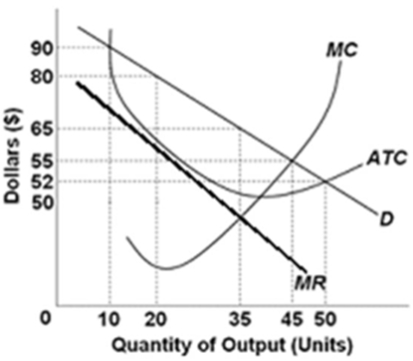A) the use of trademarks and brand names
B) recognized mutual interdependence
C) product differentiation
D) a relatively large number of sellers
Correct Answer

verified
Correct Answer
verified
Multiple Choice
Dequam likes product variety, while Natasha is most concerned about paying the lowest price possible for a good. This suggests that
A) Dequam cares more about allocative efficiency, while Natasha cares more about productive efficiency.
B) Dequam cares more about productive efficiency, while Natasha cares more about allocative efficiency.
C) Dequam prefers monopolistically competitive industries, while Natasha prefers purely competitive industries.
D) Dequam prefers purely competitive industries, while Natasha prefers monopolistically competitive industries.
Correct Answer

verified
Correct Answer
verified
True/False
The four-firm concentration ratio cannot have a value above 1.0.
Correct Answer

verified
Correct Answer
verified
Multiple Choice
The larger the number of firms and the smaller the degree of product differentiation, the
A) greater the divergence between the demand and the marginal revenue curves of the monopolistically competitive firm.
B) larger will be the monopolistically competitive firm's fixed costs.
C) less elastic is the monopolistically competitive firm's demand curve.
D) more elastic is the monopolistically competitive firm's demand curve.
Correct Answer

verified
Correct Answer
verified
Multiple Choice
The restaurant, legal assistance, and clothing industries are each illustrations of
A) countervailing power.
B) homogeneous oligopoly.
C) monopolistic competition.
D) pure monopoly.
Correct Answer

verified
Correct Answer
verified
Multiple Choice
The stronger the product differentiation in monopolistic competition, the
A) less elastic the demand curve, and production will take place further to the left of minimum average costs.
B) less elastic the demand curve, and production will take place further to the right of minimum average costs.
C) more elastic the demand curve, and production will take place further to the left of minimum average costs.
D) more elastic the demand curve, and production will take place further to the right of minimum average costs.
Correct Answer

verified
Correct Answer
verified
True/False
In monopolistic competition, easy industry entry and exit drives long-run profits of firms to zero.
Correct Answer

verified
Correct Answer
verified
Multiple Choice
In which of these continuums of degrees of competition (highest to lowest) is monopolistic competition properly placed?
A) pure competition, oligopoly, pure monopoly, monopolistic competition
B) oligopoly, pure competition, monopolistic competition, pure monopoly
C) monopolistic competition, pure competition, pure monopoly, oligopoly
D) pure competition, monopolistic competition, oligopoly, pure monopoly
Correct Answer

verified
Correct Answer
verified
True/False
The excess capacity problem associated with monopolistic competition implies that fewer firms could produce the same industry output at a lower total cost.
Correct Answer

verified
Correct Answer
verified
Multiple Choice
Which is true of pure competition but not of monopolistic competition?
A) There are no significant barriers to entry.
B) Long-run economic profits are zero.
C) There are a large number of firms in the market.
D) Long-run equilibrium occurs at the minimum point on the ATC curve.
Correct Answer

verified
Correct Answer
verified
Multiple Choice
In the long-run equilibrium of a monopolistically competitive industry,
A) P = minimum ATC.
B) P > minimum ATC.
C) P = MC.
D) P < MC.
Correct Answer

verified
Correct Answer
verified
Multiple Choice
The monopolistically competitive seller maximizes profit by producing at the point where
A) total revenue is at a maximum.
B) average costs are at a minimum.
C) marginal revenue equals marginal cost.
D) price equals marginal revenue.
Correct Answer

verified
Correct Answer
verified
Multiple Choice
The graph depicts a monopolistically competitive firm.  In the short run, this monopolistically competitive firm will set the price at
In the short run, this monopolistically competitive firm will set the price at
A) $55 and produce 45 units of output.
B) $65 and produce 35 units of output.
C) $50 and produce 35 units of output.
D) $52 and produce 50 units of output.
Correct Answer

verified
Correct Answer
verified
True/False
The amount of excess capacity in pure competition tends to become larger the more elastic the individual firm’s demand curve becomes.
Correct Answer

verified
Correct Answer
verified
Showing 181 - 194 of 194
Related Exams